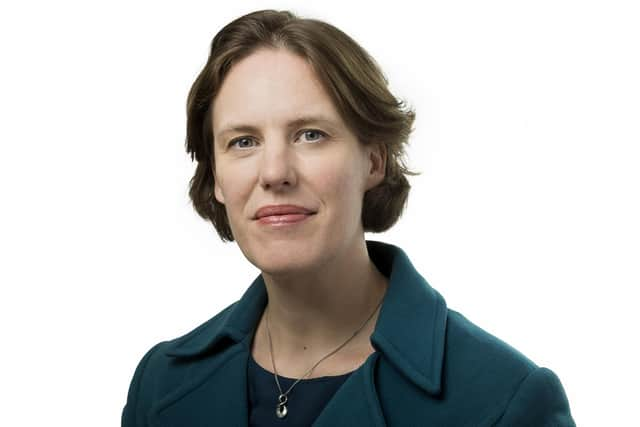Automation won’t mean that there’s fewer jobs just a transformation in the labour market - Freya Thomas Monk
Put simply, instead of fewer jobs, there will be a transformation into different roles. Pearson, a world-leading education company, drew upon cutting-edge artificial intelligence to build its Skills Map of England which shows there could be 12,900 extra job opportunities in the region by 2027.
The data demonstrates that cities including Leeds, Sheffield, and York, as well as towns and villages across the region, will experience significant labour market changes, but the specific demands will vary by sector.
Advertisement
Hide AdAdvertisement
Hide AdFuelled by automation and augmentation, this shift is not a doomsday scenario of vanishing opportunities.


Rather, it’s a call to action for employers and education leaders to help their workforce reskill and upskill to prosper in the changing landscape.
The key lies in understanding the ebb and flow of opportunity across different sectors and efficiently transitioning displaced individuals into these emerging career paths.
The region is at the forefront of this transformation, with a net increase of 18,700 employees projected in the transportation and storage sector.
Advertisement
Hide AdAdvertisement
Hide AdAmong these, the role of large goods vehicle drivers is poised to be the fastest-growing, requiring an additional 2,200 workers.
However, not all sectors will see a rise in employment.
Wholesale and retail trade, a cornerstone of many high streets, is anticipated to witness a net decrease of 15,700 jobs. Within this sector, sales and retail assistants face an 8,200 job decline. The landscape is shifting, and it demands a strategic approach to ensure that the workforce can adapt and flourish.
The data serves as a call to policymakers, business leaders, educators, and job seekers alike. It underlines the urgency of preparing for a future where adaptability is key, and the ability to retrain becomes a cornerstone of individual and regional success.
Local leaders in Yorkshire and the Humber need a tailored, localised plan that leverages regional strengths. The key lies in understanding the unique demands of each area and crafting strategies that foster adaptability.
Advertisement
Hide AdAdvertisement
Hide AdThis is not just about weathering the storm of change but cultivating a workforce that is adaptable to economic change.
That is why further devolution of skills and employment funding to mayors is vital.
Local authorities are familiar with their region’s needs and are positioned to respond effectively and swiftly.
In this journey toward a future-ready workforce, Pearson’s Skills Map of England serves as a guiding compass.
Advertisement
Hide AdAdvertisement
Hide AdYet, the challenges posed by technological transformations are substantial.
Data emerges as a central player in this proactive approach. Evidence-led policymaking, backed by data, ensures decisions are not just reactive but forward-looking, aligned with the future trends of the workforce.
The future is bright for Yorkshire and the Humber, but only if we act now. The opportunities presented by automation are vast, and the transformation of jobs should be seen not as a threat but as a chance for growth and adaptation.
The journey may be challenging, but the destination promises a resilient, adaptable workforce that is ready for tomorrow’s opportunities.
Freya Thomas Monk is Managing Director of Vocational Qualifications and Training at Pearson.
Comment Guidelines
National World encourages reader discussion on our stories. User feedback, insights and back-and-forth exchanges add a rich layer of context to reporting. Please review our Community Guidelines before commenting.